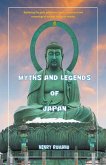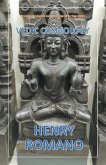
14,99 €
Versandfertig in 1-2 Wochen

12,99 €
Versandfertig in 1-2 Wochen
9,49 €
inkl. MwSt. und vom Verlag festgesetzt.
Sofort per Download lieferbar
9,49 €
inkl. MwSt. und vom Verlag festgesetzt.
Sofort per Download lieferbar
9,49 €
inkl. MwSt. und vom Verlag festgesetzt.
Sofort per Download lieferbar
9,49 €
inkl. MwSt. und vom Verlag festgesetzt.
Sofort per Download lieferbar
9,49 €
inkl. MwSt. und vom Verlag festgesetzt.
Sofort per Download lieferbar
eBook, ePUB
15. August 2022
DTTV PUBLICATIONS
9,49 €
inkl. MwSt. und vom Verlag festgesetzt.
Sofort per Download lieferbar
eBook, ePUB
14. August 2022
DTTV PUBLICATIONS
9,49 €
inkl. MwSt. und vom Verlag festgesetzt.
Sofort per Download lieferbar
9,49 €
inkl. MwSt. und vom Verlag festgesetzt.
Sofort per Download lieferbar
9,49 €
inkl. MwSt. und vom Verlag festgesetzt.
Sofort per Download lieferbar
4,99 €
inkl. MwSt. und vom Verlag festgesetzt.
Sofort per Download lieferbar
4,99 €
inkl. MwSt. und vom Verlag festgesetzt.
Sofort per Download lieferbar
9,49 €
inkl. MwSt. und vom Verlag festgesetzt.
Sofort per Download lieferbar
4,99 €
inkl. MwSt. und vom Verlag festgesetzt.
Sofort per Download lieferbar
Ähnlichkeitssuche: Fact®Finder von OMIKRON
